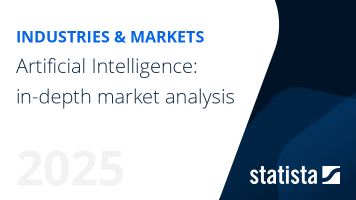The NLP market in South Korea is experiencing mild growth, driven by factors such as increasing adoption of AI technologies, growing awareness of language translation, and convenience of online services. This trend is impacted by the country's tech-savvy population and government initiatives promoting digital healthcare.
Customer preferences: As South Korea continues to embrace digital technologies, there has been a rise in demand for language translation NLP services to bridge communication gaps. This trend is driven by the country's growing international presence and the need for efficient cross-cultural communication. Furthermore, with the rise of e-commerce and online businesses, there is a growing demand for accurate and efficient translation services to cater to global consumers. This trend is expected to continue as South Korea's digital economy expands and language barriers become a significant hindrance to business growth.
Trends in the market: In South Korea, the Language translation NLP Market within the Natural Language Processing Market of the Artificial Intelligence Market is experiencing a surge in demand for translation services due to the increasing globalization of businesses. This trend is driven by the country's growing economy and its increasing presence on the global stage. As a result, there is a growing need for accurate and efficient translation solutions, leading to the development of advanced NLP technologies. This trend is expected to continue, providing opportunities for industry players to tap into this market and expand their services. Additionally, the rise of online platforms and mobile applications for language translation is making it more convenient for businesses and individuals to communicate with international partners, further driving the demand for NLP translation services. As the world becomes more interconnected, the Language translation NLP Market within the Natural Language Processing Market is poised for significant growth, providing lucrative opportunities for industry stakeholders.
Local special circumstances: In South Korea, the Language translation NLP Market of the Natural Language Processing Market within the Artificial Intelligence Market is heavily influenced by the country's advanced technology infrastructure and high internet usage rates. Additionally, the government's focus on promoting the use of AI and language translation in various industries, such as tourism and e-commerce, has led to a growing demand for NLP solutions. Furthermore, the country's unique language and cultural nuances require specialized NLP tools, creating a niche market for local providers to thrive.
Underlying macroeconomic factors: The Language translation NLP Market within the Artificial Intelligence Market in South Korea is strongly influenced by macroeconomic factors such as technological advancements, government support, and investment in AI infrastructure. South Korea, being a leader in technological innovation and a strong economy, presents a favorable environment for the growth of the NLP market. The country's active investments in AI research and development, along with its highly skilled workforce, contribute to the rapid adoption of NLP solutions and services. Additionally, the increasing demand for efficient and accurate language translation solutions in various industries, such as e-commerce, healthcare, and customer service, further drives the growth of the NLP market in South Korea.








